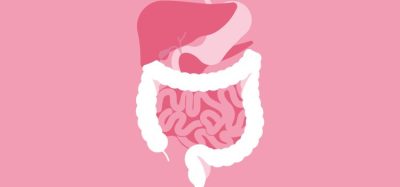Phase I/II data for neoGAA in Pompe disease presented
Posted: 4 March 2016 | | No comments yet
Sanofi Genzyme says the safety and efficacy data from the NEO1 study support further development of neoGAA…


Sanofi and its specialty care global business unit Sanofi Genzyme has presented data from NEO1, its Phase I/II clinical study evaluating the investigational novel enzyme replacement therapy neoGAA in 24 patients with late-onset Pompe disease.


The safety and efficacy data support further development of the therapy. Sanofi Genzyme has said it plans to begin enrolling patients in a pivotal Phase III trial for neoGAA later this year.
Pompe disease is a progressive, debilitating and often fatal neuromuscular disease caused by a genetic deficiency or dysfunction of the lysosomal enzyme acid alpha-glucosidase (GAA) affecting an estimated 50,000 people worldwide. Patients often lose their ability to walk and require wheelchairs to assist with mobility. They also often experience difficulty breathing and may require mechanical ventilation to breathe.
The NEO1 study was an open-label, multicentre, multinational, ascending dose study of safety, tolerability, pharmacokinetics, pharmacodynamics and exploratory efficacy of investigational neoGAA in treatment-naïve and alglucosidase alfa-treated (treatment-experienced) late-onset Pompe disease patients. Adult patients with acid ALPHA-glucosidase enzyme deficiency who could walk >=50 m independently without stopping and had upright forced vital capacity (FVC) >=50% predicted at baseline received intravenous infusion neoGAA for 24 weeks. In the treatment-naïve group, 9 of 10 treated patients completed the study. In the treatment-experienced patient group, 12 of 14 treated patients completed the study.
NeoGAA was generally safe and well tolerated at all dose levels. There were no deaths or life-threatening serious adverse events (SAEs). One patient experienced a study drug related SAE of respiratory distress and chest discomfort and discontinued treatment. Two additional patients withdrew consent for non-AE related reasons. Overall, 8 of 10 patients (80.0%) in the treatment-naïve group and 12 of 14 patients (85.7%) in the treatment-experienced group had at least one treatment-emergent AE during the study. The majority of treatment-emergent AEs were non-serious, mild to moderate in intensity and assessed as unrelated to study drug. The most frequently reported treatment-emergent AEs considered related to study drug were myalgia or muscle pain, headache and fatigue.
Data indicates the potential for neoGAA
In terms of exploratory efficacy, no clear response relationship was observed between dose levels or treatment groups. At the highest dose tested, 20 mg/kg, which is the dose that will be used in the Phase III clinical trial, percent predicted FVC, maximal expiratory pressure (MEP) and maximal inspiratory pressure (MIP) increased by means (± SD) of 6.2 ± 3.2%, 12.0 ± 4.1%, and 7.9 ± 15.7%, respectively, from baseline to Week 25 in treatment-naïve patients; corresponding changes in treatment-experienced patients were 1.4 ± 5.7%, 6.0± 21.8%, and -0.2 ± 6.9%. After 24 weeks of treatment with the 20 mg/kg dose, the 6-minute walk test distance increased by 24.3 ± 23.0 m in treatment-naïve patients and decreased by 6.2 ± 64.3 m in treatment-experienced patients.
Commenting on the data, Loren D.M. Pena, MD, PhD, Assistant Professor of Pediatrics, Duke University School of Medicine and coordinating investigator for the study, said: “The positive trending of exploratory data across all three respiratory endpoints – percent predicted FVC, MEP and MIP – suggests improvement or stabilisation of pulmonary function in late-onset Pompe patients. This combined with the safety data indicates the potential for further development of neoGAA.”









